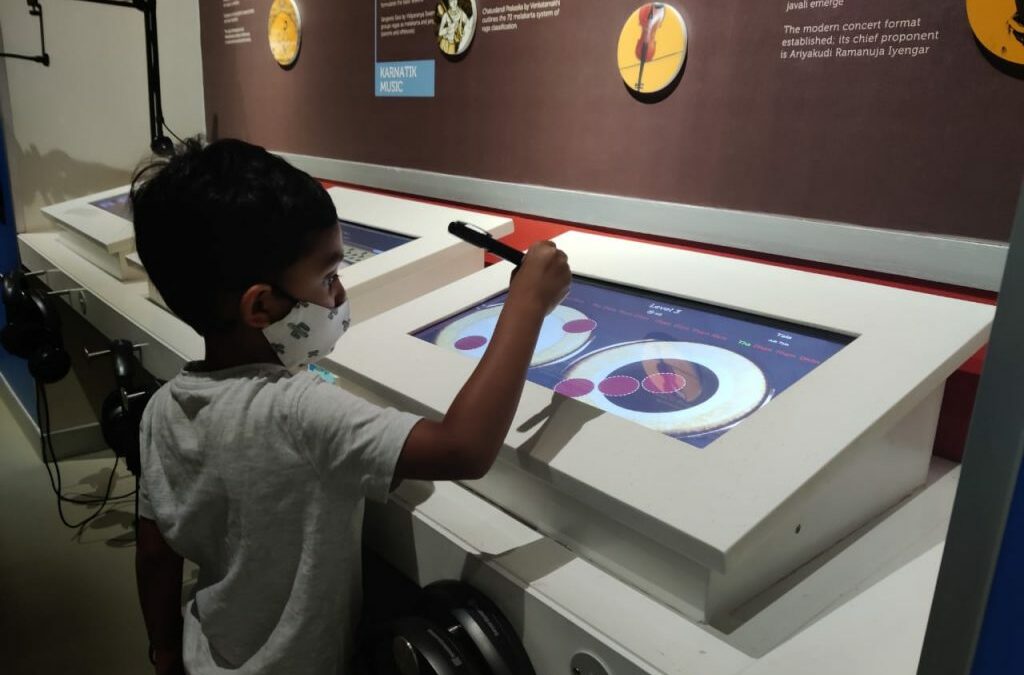Museums are increasingly relying on technology for various purposes. Especially in this pivotal moment, when the COVID crisis is accelerating the use of technology in all spheres, including the museum sector. We have seen – as more and more museums work with interactive technologies, people are engaging better at the museums and have renewed curiosity about the subject.
With a vision to inform and inspire young people, IME has always tried to provide immersive experiences to achieve a more meaningful connection to the story of Indian music and also to give a deeper learning experience. Technology has played a huge part in delivering this experience to our visitors. The circular theatre giving an immersive musical experience, a theatre with an overhead screen explaining the relationship between raga and time, gamified interactives, dancing puppets, recording studio, over numerous media players are some of the examples that showcase the use of technology at the IME museum.
We proudly mentioned time and again that contrary to ‘do not touch’ museum culture in our country, we are a ‘please touch’ museum. But with the COVID 19 crisis on hand, can we give an equally good hands-off experience? Can this crisis be a fertile ground for innovation?
Museums are exploring creative ways of engaging people in a secure environment. In this phase of social distancing and lockdowns- virtual classrooms, virtual museum tours, inspiring talks, interviews and impromptu concerts on web-conferencing apps and social media platforms have become the norm. For some time to come, people will be cautious when they come into public spaces, especially if they have to interact with touch screens and other devices. Going forward, museums world over may see newer no-touch technologies such as body and gesture detection, proximity-based devices, reflected light and directional sound, augmented and virtual reality and artificial intelligence-induced experiences. After all, that is in sync with the learning styles of the new generation of museum-goers.
For now, at IME, along with stringent hygiene protocols, we have undertaken immediate improvements to the existing interactives such as a stylus for touch screens and accommodating personal headphones for media players etc. We are also exploring audio guides through personal mobile phones instead of museum provided devices. Museum sector post COVID will only become more interesting with the rapid introduction of technology in all spheres of the museum sector, and we look forward to it.

